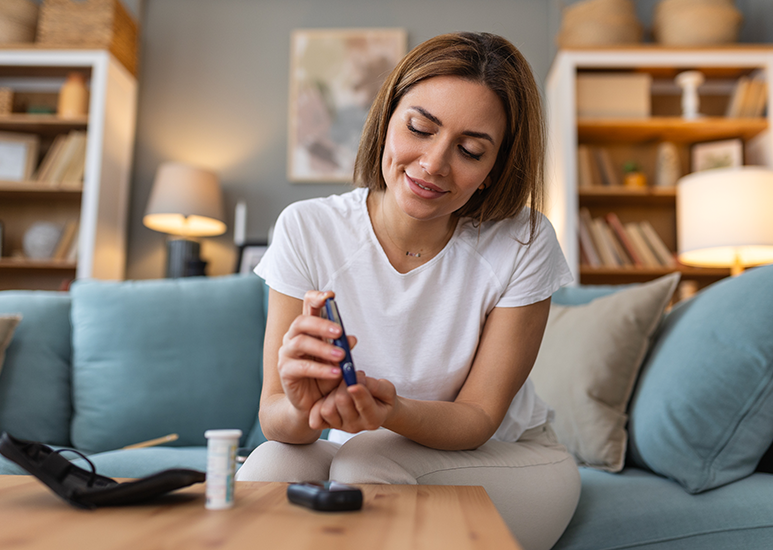The symptoms of diabetes are numerous and varied. While there is a difference in how type 1 and type 2 diabetes take form, the symptoms below pertain to both forms of the disease unless noted otherwise.
It's easy to start a conversation with your doctor. Begin by taking a health risk assessment (HRA). Then, discuss your results with your primary care doctor.
Start Diabetes HRA
Don't have a primary care doctor? Use our Find A Doc tool to read patient reviews, watch interviews, and select an exceptional doctor who fits your unique needs.
Find A Doc
Here are the warning signs to look out for if you think you have diabetes:
Food and Energy
When you eat, your body converts food to glucose which is usually absorbed by your cells for energy. Your cells use the hormone insulin to absorb that energy. If you have diabetes, your cells may resist insulin and reduce the amount of energy they can produce. You may feel sluggish or extremely fatigued as a result.
You may also feel more hungry, even if you’ve already eaten. Since your cells aren’t able to create energy from glucose, your body turns to other sources for energy. It may begin burning muscle and fat, causing unexpected weight loss. An important part of managing diabetes is learning about ways your diet can affect your blood sugars.
Drinks and Liquids
Diabetes also affects how your body retains water. Your kidneys are responsible for reabsorbing glucose, but high blood pressure may overwhelm your kidney. Your body may make more urine to compensate, which causes frequent trips to the bathroom.
As you urinate more frequently, you may become very thirsty. Drinking more water in turn causes more frequent urination, so you may find yourself spending much more time in the restroom. These rapidly fluctuating fluid levels in your body may also affect your vision. Your eyes’ lenses may swell, causing blurry vision.
Other Effects on the Body
Diabetes symptoms can span the entire body. High levels of glucose in the blood can affect your body’s ability to heal. Cuts and bruises may be slow to heal, and you may have high blood pressure, especially if you have type 2 diabetes. Those with type 2 diabetes may also experience tingling, pain or numbness in their hands or feet.
Both men and women may also experience yeast infections. Yeast is a living organism that seeks out glucose, which is in ample supply in those with diabetes. If you are experiencing frequent yeast infections between your fingers and toes or around your genitals, it may be a symptom of diabetes.
Diabetes Education Sessions-FREE
 If you’d like to learn more about managing your diabetes, or just need a refresher, attend our FREE education sessions. During virtual sessions, participants will be able to see the instructor, ask questions and see the presentation. In-person classes available upon request.
If you’d like to learn more about managing your diabetes, or just need a refresher, attend our FREE education sessions. During virtual sessions, participants will be able to see the instructor, ask questions and see the presentation. In-person classes available upon request.
To register, please call 317-626-2452 or 765-776-8888 or email diabetesclass@eCommunity.com to connect with a diabetes educator who can help you get set up and assist with any technical questions.
Virtual Classes
- June 10, 12 @ 1 - 3:30pm
- June 24, 26 @ 5:30 - 8pm
- July 8, 10 @ 10am - 12:30pm
- July 22, 24 @ 4:30-7pm
- August 12, 14 @ 1 - 3:30pm
- August 19, 21 @ 4:30-7pm

 If you’d like to learn more about managing your diabetes, or just need a refresher, attend our FREE education sessions. During virtual sessions, participants will be able to see the instructor, ask questions and see the presentation. In-person classes available upon request.
If you’d like to learn more about managing your diabetes, or just need a refresher, attend our FREE education sessions. During virtual sessions, participants will be able to see the instructor, ask questions and see the presentation. In-person classes available upon request.